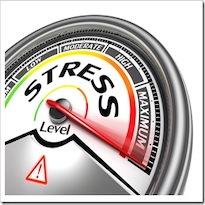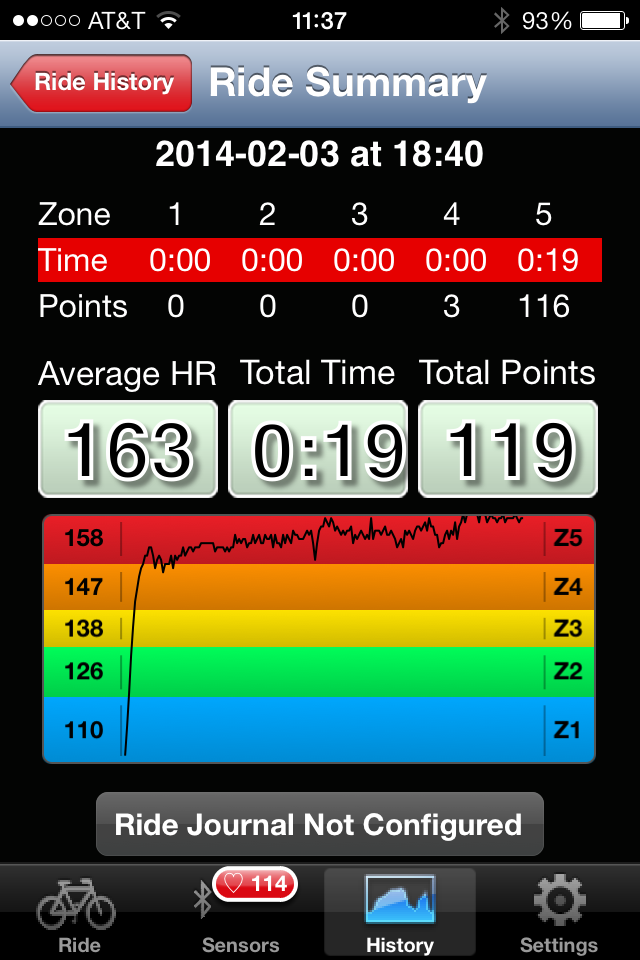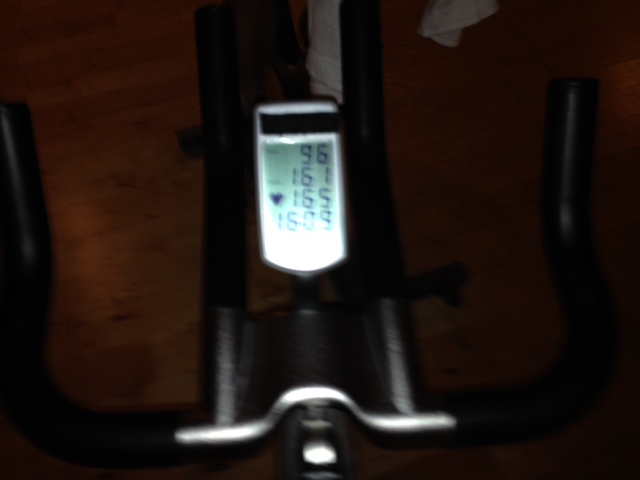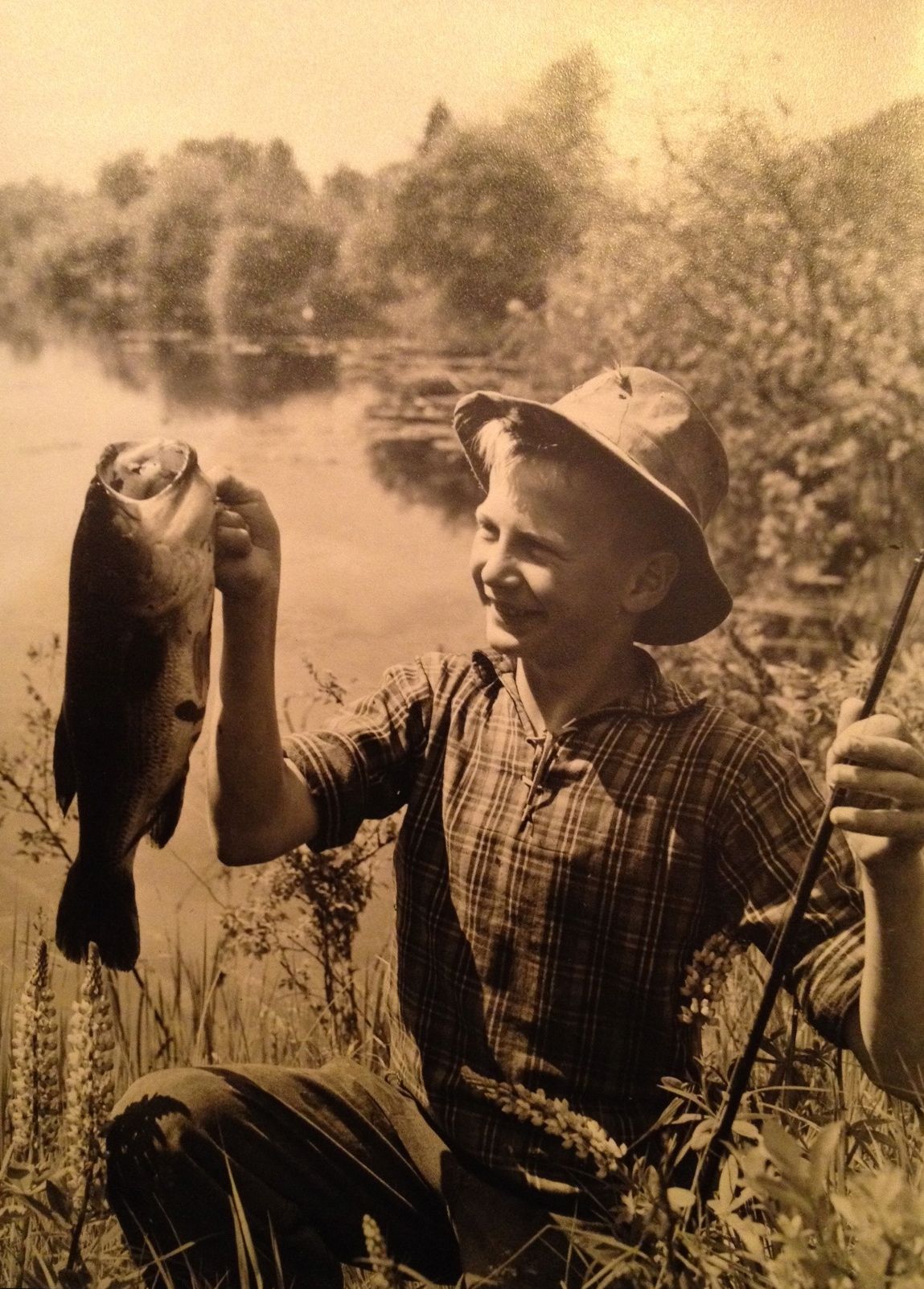In all our heart rate training articles posted, or heart rate workshops conducted, we always stress the fact that heart rate, while an effective way to monitor your intensity, is subject to many external factors that have nothing to do with the work you are performing. These factors include over-reaching, over-training, lack of sleep, dehydration, caffeine, medications, heat, humidity, stress, and others. It is important to understand the limitations of heart rate training if one is to use it properly as a training tool.
One of the factors we may ignore the most is stress. Why is that? Perhaps it’s because many of us live a daily existence that is highly stressful, so we think it is the “new normal.” Jobs, family, relationships, being stuck in traffic, the stresses of the economy, too much work, or the opposite–unemployment, and many other stressors seem to control our lives. Stress causes the release of cortisol, which is incidentally, the same hormone that we release with high-intensity exercise.
I have a personal example of the results of stress on my heart rate that I want to share with you. This past six months, there have been quite a few stressors in my life, including spending long hours at my computer building a business. This work thing has eaten into my workout time considerably over the past few years…(that is something I plan to change in 2014). Other personal stresses have been mounting the last two months especially.
Two weeks ago, I did a field test. I know over years of doing field tests, and then validating the results, that my estimated lactate threshold typically ranges from 157 when I’m less fit, to 161 when I’m very fit. Any time my heart rate sneaks over 160-ish, I know I cannot sustain it. I have validated this again and again when I have felt fresh and strong, both indoors and outdoors. Here is an article I wrote a few years ago about how validation can be so…validating!
My recent field test yielded the following results. I started the Ride Buddy app after pushing hard for 1 minute to raise my heart rate, and then rode as hard I could for 20 minutes. It stated my average was 163, and on the stats page, said the highest heart rate I hit was 172. As you look at this, tell me how you would assess the results, knowing my previous LT was set at 158 (the border between the orange Zone 4 and the red Zone 5):
Normally, an increase in LT of five beats is an event to celebrate. It would mean that I have “bought” myself (so to speak) about five extra beats in which I remain primarily aerobic, utilizing fat as a fuel source for a longer range of heartbeats. It would theoretically mean that I could go harder, and faster (outdoors) before being forced to back off.
That is, I might assume this if I didn’t know the truth…that my training the past six months has been lacking and in no way has been anywhere near the volume of training that would cause these types of beneficial adaptations.
The long and short of it is likely due to the heightened state of stress I’ve been under. This is why at ICA, we teach you how to look at the big picture when doing field tests to help students pinpoint what their lactate threshold might be. It is also why it is so important to validate your numbers over time, to average out any discrepancies, or to throw out results that may skew an accurate (or as accurate as you can get with estimates) assessment.
Two days after I did this field test, my father passed away.
He’s been in a home with advanced Alzheimer’s for the past two years, and the previous six weeks he’d been going downhill, but overall, my father was physically pretty healthy. But regardless of whether you are “expecting” it, death is always a shock. Unfortunately I was unable to fly out in time, due to a snow storm and delayed flight (which would have caused me to miss my connection). So through the magic of modern technology, I watched over Skype thanks to my brother-in-law posting his iPad so the family could be a part of the vigil from a distance. My father passed away peacefully and without pain.
A couple of days later, I was working with a student one-on-one to take her through a field test, since she had missed the one we did in class. I did not ride hard myself, as I needed to be able to motivate her as she pushed herself. I pushed the bikes very close together, facing her, so I could inspire her and look at her HR monitor if needed. And I kept my perceived exertion at moderate, perhaps a little higher on occasion. This was the number I repeatedly saw on my own HR monitor (pardon the poor photo):
You can see the third number down, 165. Normally, a heart rate of 165 would be well above my threshold, and have me breathing very hard, with a sense of being slightly out of control, with a perceived exertion of very hard. That was not the case on this particular day. My RPE was about 5, able to speak in fairly full (though shortened) sentences. That, my friends, is the result of stress! As a result of seeing that heart rate for over 5 minutes, I pulled back my effort and rode easier. Without a heart rate monitor, I would not have known what was happening (another reason to wear a heart rate monitor).
So, the moral of the story…stress can wreak havoc with your heart rate, as well as many other physiological, emotional, and mental aspects of your life.
I’ve been limiting my rides to Zone 2 since then to limit the release of even more cortisol.
Take care of yourselves, and breathe!
Richard Paul Ralph
March 15, 1928–February 5, 2014
In honor of my father, here is a photo of him as a young boy in upstate Idaho, in a very unstressed state! He grew up on a ranch with a lot of great streams running through it (where he taught me to fish as a young girl). On this particular, happy day, he was walking home with his big-mouth bass prize, and a photographer happened to be driving by and saw him and his fish. He stopped and asked if he could take a picture, and this photo became a postcard in upstate Idaho in the early 1940s!





OH, Renee, about the Zone 2 training, I’ll be posting an article soon about what I’m doing in my 12-week Winter Training programs (I’m teaching 2 classes, 2X a week at the moment). It’s quite challenging to get them to stay in Zone 2! It’s been about a month, we’ll start increasing intensity soon.
Thank you all for your kind words. Kimberly, you are certainly on to something there! The Universe knows! =)
Renee, yes, he certainly was like Opie of Mayberry RFD! I never thought of that, thanks so much!
Great comment Kimberly and so on target.
Jennifer. great article as always. I did my own field test last month and our numbers match. I find I get way too high in my heart rate in class and am doing much better to monitor and control that intensity. At home i have backed down my zone training into Z2 and 3. What is your duration for your zone 2 training? Will you maintain this zone training till your next field test? When will you repeat your field test?
just love the photo of your dad and the fish. He was the Opie from the Mayberry t.v. show days.
Dearest Jennifer:
I send blessings, peace and love to you and your family. Thank you very much for sharing your story with us.
I learned from the Institute of HeartMath, that there is an intuitive heart rate response to trauma and high intensity incidents well in advance of the “event”. Of course quantum physics has been steadily describing a universe in which all phenomena are connected, and time and space are not linear, but it is still startling to me when I hear you describe a “preemptive” heart rate response-two days BEFORE your father’s death.
It goes to show me, when I am teaching a class, I do not really know what is going on with my students. Most of my students do not know what is really going on either. That is why it is so important to base my teaching in sound practices, such as heart rate training, safe movements on the bike, emphasis on breathing, personal attention, and genuine care for each and every one of my students. It is above my pay grade to know the unknowable, but it is completely within my job description to stay awake to the cues and clues that are all around me when I am really engaged as teacher/coach.
Thank you again, Jennifer, for sharing your heart with us. Thanks to your great Dad. peace and love, k
You are welcome Carol. I am blessed with my very blonde hair and blue eyes from him!
Another WONDERFUL article!
Thank you Jennifer for sharing your father. Love this picture!!